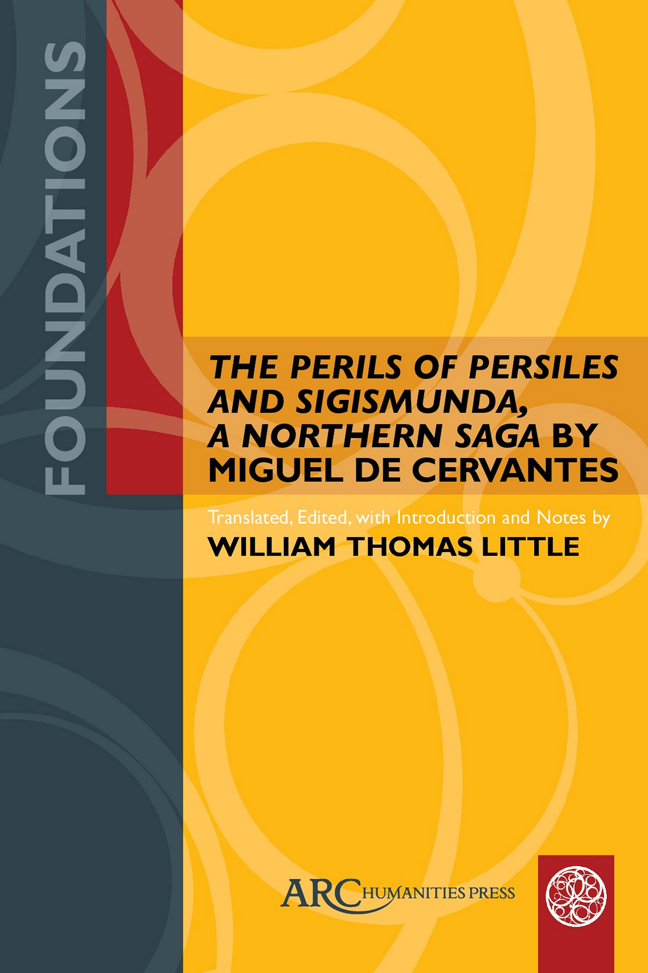Book contents
- Frontmatter
- Contents
- List of Illustrations
- Abbreviations
- Acknowledgements
- Maps
- Introduction
- The Perils of Persiles and Sigismunda, a Northern Saga
- First Book of the Story of the Perils of Persiles and Sigismunda
- Second Book of the Perils of Persiles and Sigismunda
- Third Book of the Perils of Persiles and Sigismunda, A Northern Saga
- Fourth Book of the Perils of Persiles and Sigismunda, A Northern Saga
- List of Characters
- Select Bibliography
Second Book of the Perils of Persiles and Sigismunda
Published online by Cambridge University Press: 20 February 2024
- Frontmatter
- Contents
- List of Illustrations
- Abbreviations
- Acknowledgements
- Maps
- Introduction
- The Perils of Persiles and Sigismunda, a Northern Saga
- First Book of the Story of the Perils of Persiles and Sigismunda
- Second Book of the Perils of Persiles and Sigismunda
- Third Book of the Perils of Persiles and Sigismunda, A Northern Saga
- Fourth Book of the Perils of Persiles and Sigismunda, A Northern Saga
- List of Characters
- Select Bibliography
Summary
First Chapter
In which is told how the ship capsized with all who were inside it
IT SEEMS THAT the author of this story knew more as a lover than a historian, because almost all of this first chapter at the beginning of the second book is spent entirely on defining jealousy, occasioned by Auristela’s emotional reaction to what the ship’s captain told her. But in this translation—for so it is—it is omitted as prolix and as a thing that is much discussed and ventilated in many places, and we go to the truth of the matter, which was that a change of the wind and a gathering of the clouds turned the night black and gloomy, and the thunder, sending messages via the lightning flashes that follow it, began to upset the sailors and to benight the sight of the ship’s passengers; and the squall began so furiously that the sailors’ efforts and skill failed to overcome it. Hence, they were seized simultaneously by their distress and the storm; but despite that, each one did not fail to run to their post and do the task they saw as necessary, if not to avoid death, then to prolong life, for the bold who trust some boards to save them as much as possible, even to place their hope in the planking that the storm may have loosened from the ship, onto which they grab and consider their forceful embrace as good fortune.
Mauricio hugged Transila, his daughter; Antonio hugged Ricla and Constanza, his mother and sister; the unfortunate Auristela alone was without support, except for what her grief offered her, which was that of death, which she would have embraced gladly if it were permitted by her Christian and Catholic religion, which she sought to keep so seriously; and thus, she took refuge among the others, and, forming a knot, or rather, a ball of yarn, they allowed themselves to descend to the lowest place in the ship to escape the frightening sound of the thunder and the intermittent light of the lightning, and the chaotic racket of the sailors. In that analog to limbo, they escaped seeing themselves at times touch the heavens with their hands as the ship rose above the very clouds, while at other times the topsail scraped the sands of the deep sea.
- Type
- Chapter
- Information
- Publisher: Amsterdam University PressPrint publication year: 2023



